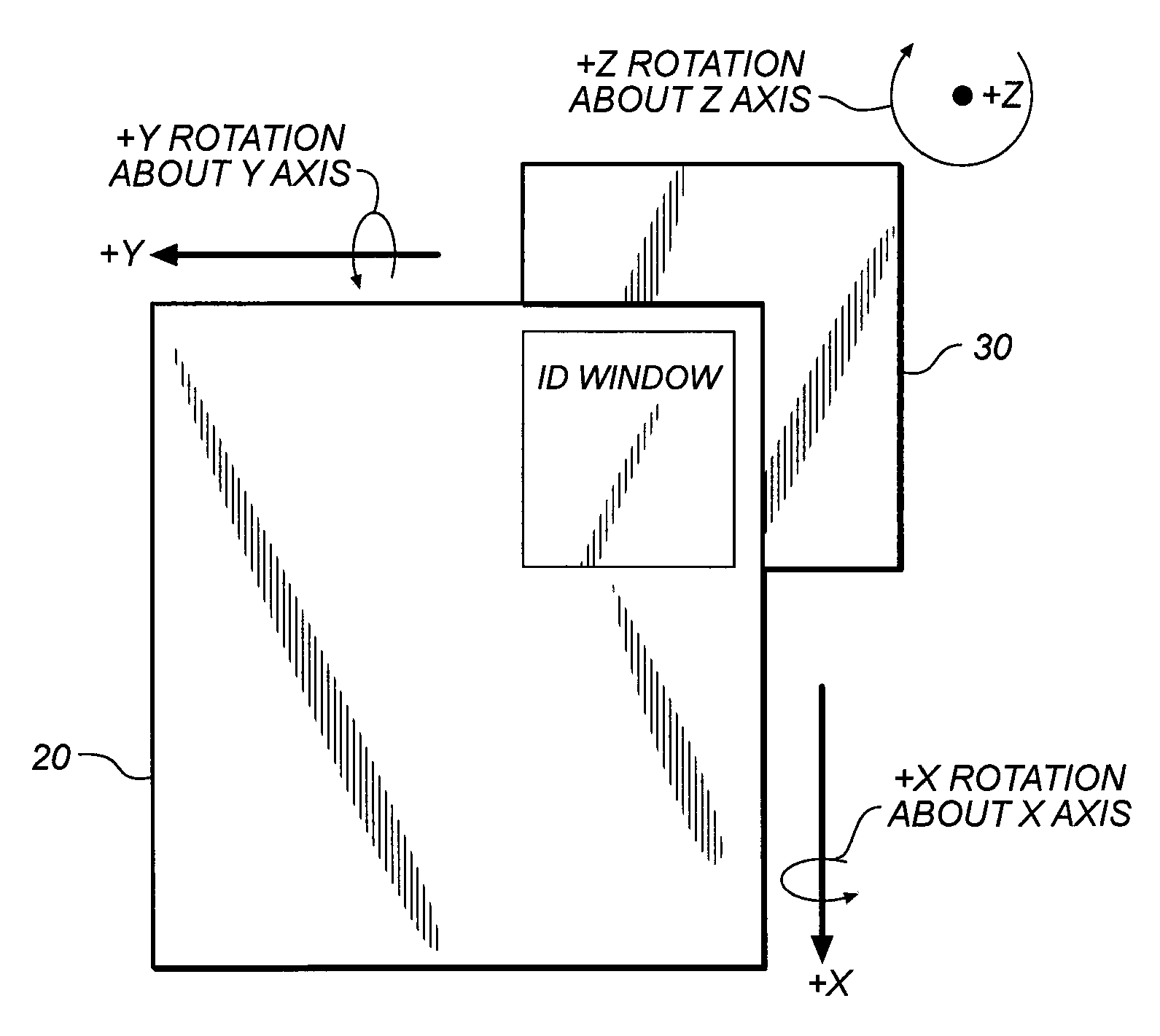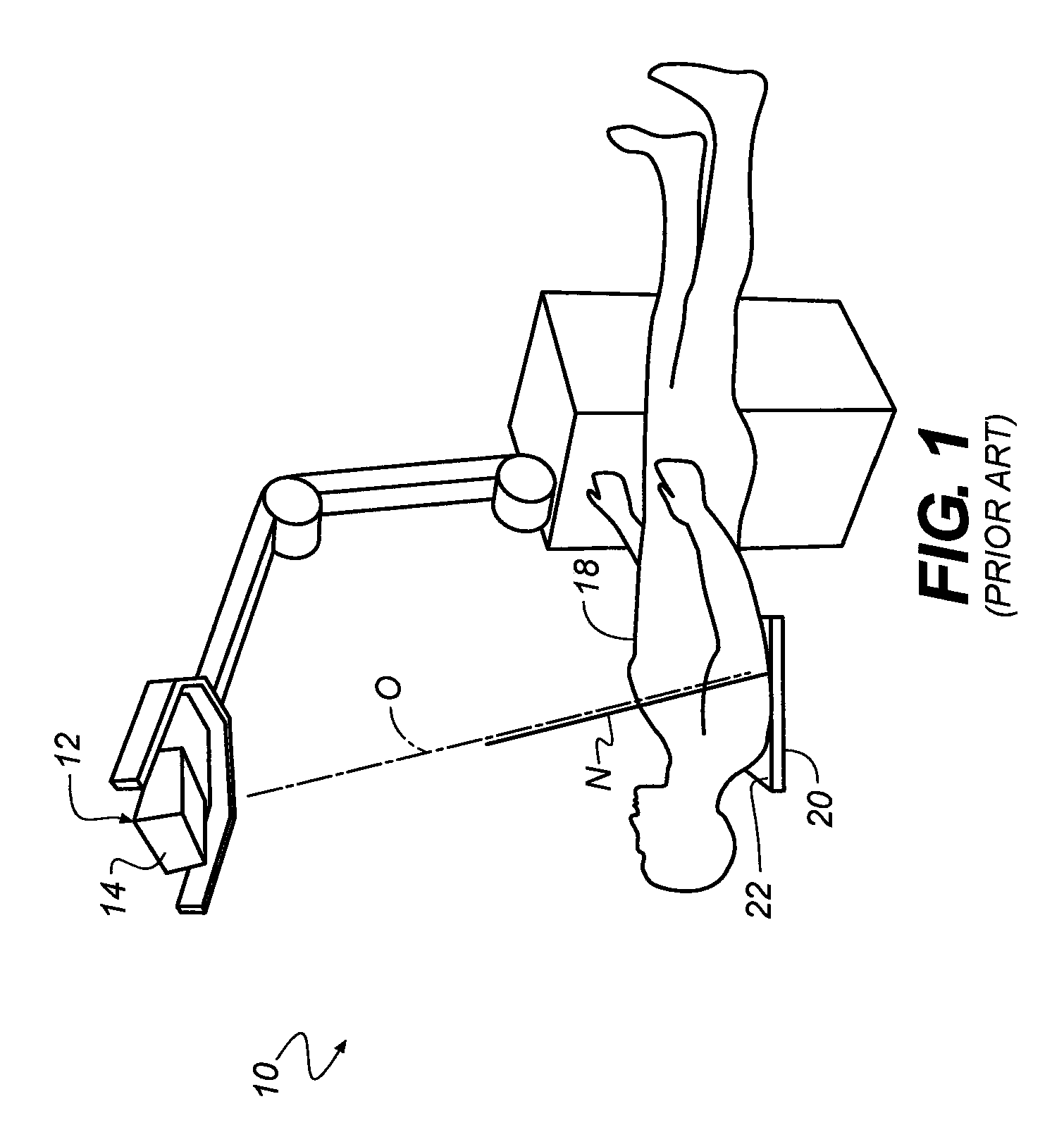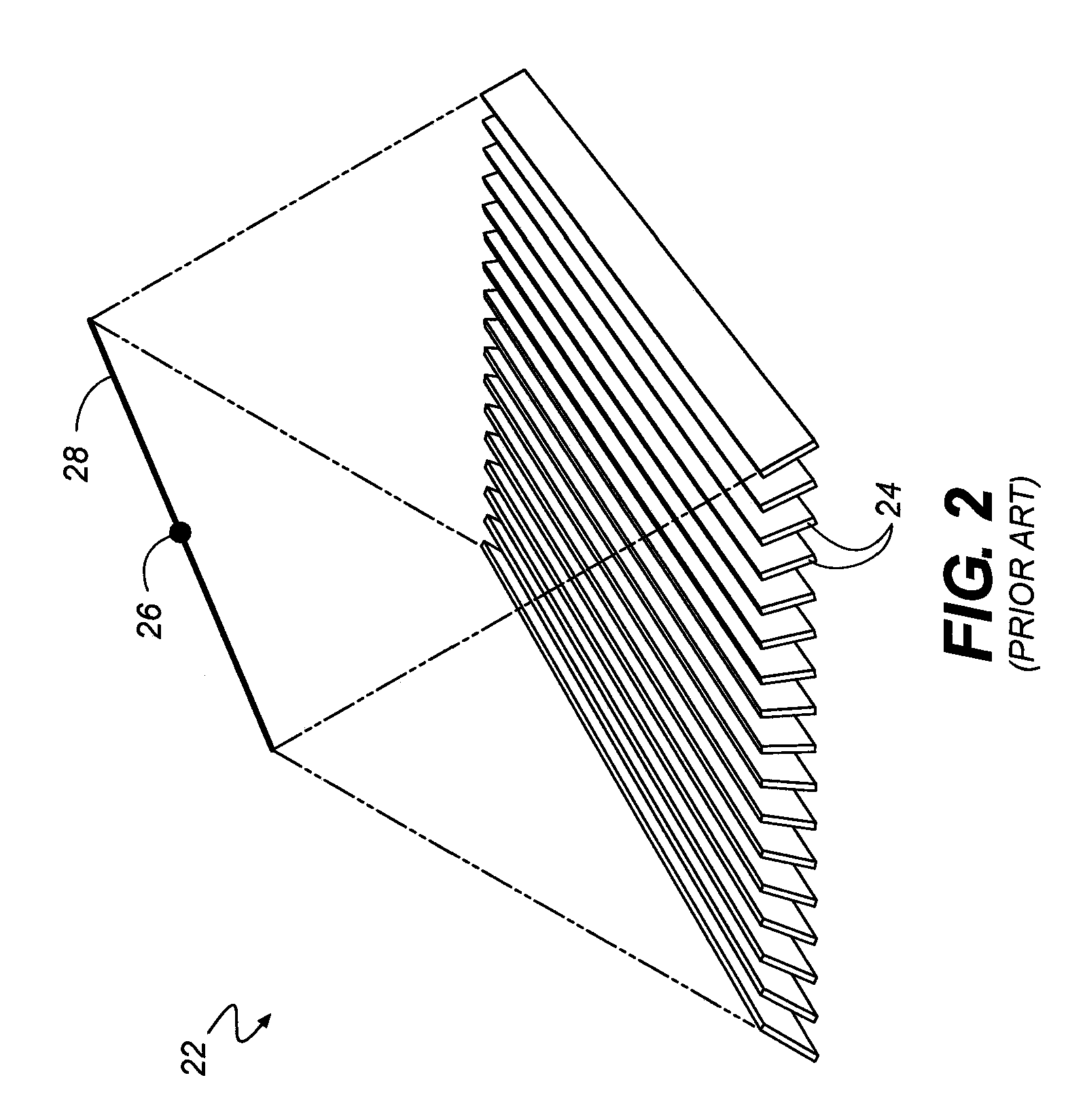Position sensing apparatus for radiation imaging system
a radiation imaging and position sensing technology, applied in the field of radiation imaging apparatus or system, can solve the problems of reducing the overall flexibility and portability of these x-ray systems, the solution proposed by tanaka et al. has limited value for achieving alignment between the image detection device and the radiation source, and the effect of increasing the effectiveness of the solution
- Summary
- Abstract
- Description
- Claims
- Application Information
AI Technical Summary
Benefits of technology
Problems solved by technology
Method used
Image
Examples
Embodiment Construction
[0063]The present description is directed in particular to elements forming part of, or cooperating more directly with, an apparatus, system or method in accordance with the invention. It is to be understood that elements not specifically shown or described may take various forms well known to those skilled in the art.
[0064]Unlike the limited tilt sensing approaches that have been used in a variety of earlier radiation imaging systems, the apparatus and method of the present invention use three-axis, preferably inertial, measurement components and techniques for obtaining object orientation data that helps to align at the proper angle a radiation source and a two dimensional radiation image detection device. Embodiments of the present invention enable the technician to position the two-dimensional radiation image detection device, also referred to in this description as a computed radiography (CR) cassette, at a favorable angle for the patient, whether in a vertical, oblique, or hor...
PUM
 Login to View More
Login to View More Abstract
Description
Claims
Application Information
 Login to View More
Login to View More - R&D
- Intellectual Property
- Life Sciences
- Materials
- Tech Scout
- Unparalleled Data Quality
- Higher Quality Content
- 60% Fewer Hallucinations
Browse by: Latest US Patents, China's latest patents, Technical Efficacy Thesaurus, Application Domain, Technology Topic, Popular Technical Reports.
© 2025 PatSnap. All rights reserved.Legal|Privacy policy|Modern Slavery Act Transparency Statement|Sitemap|About US| Contact US: help@patsnap.com



